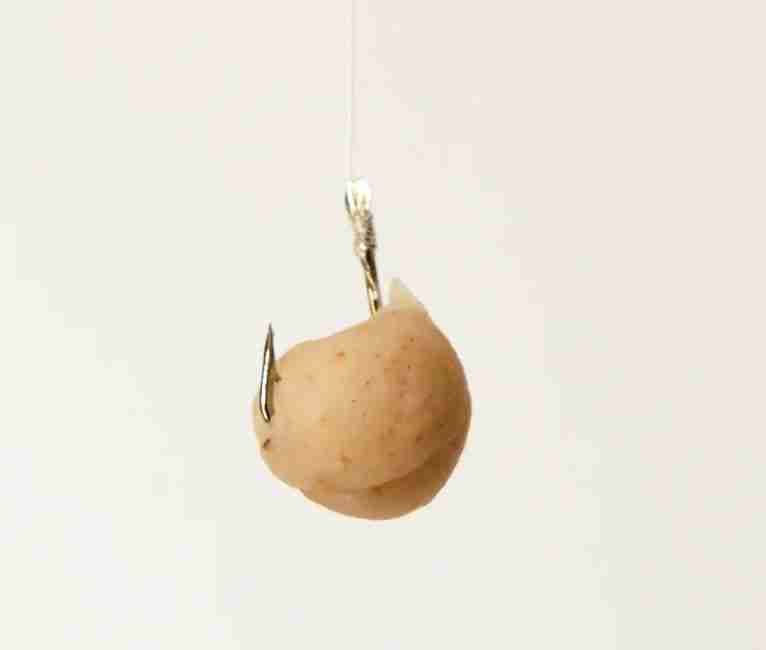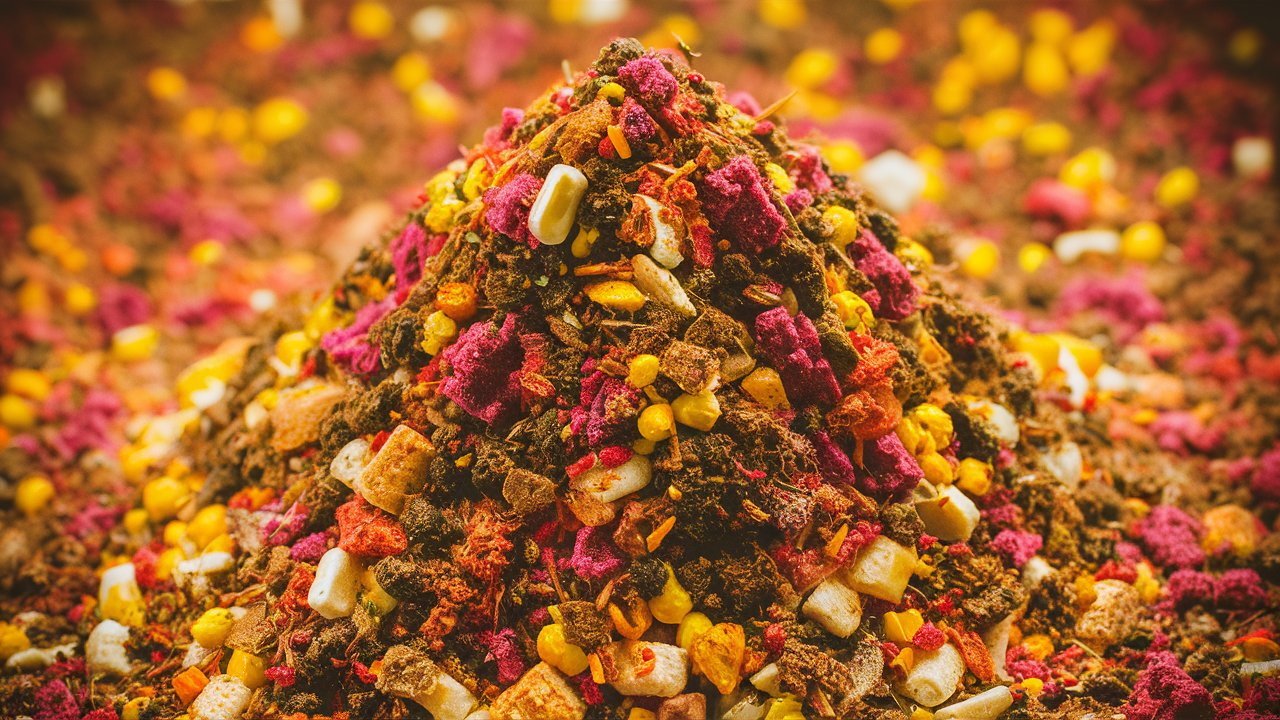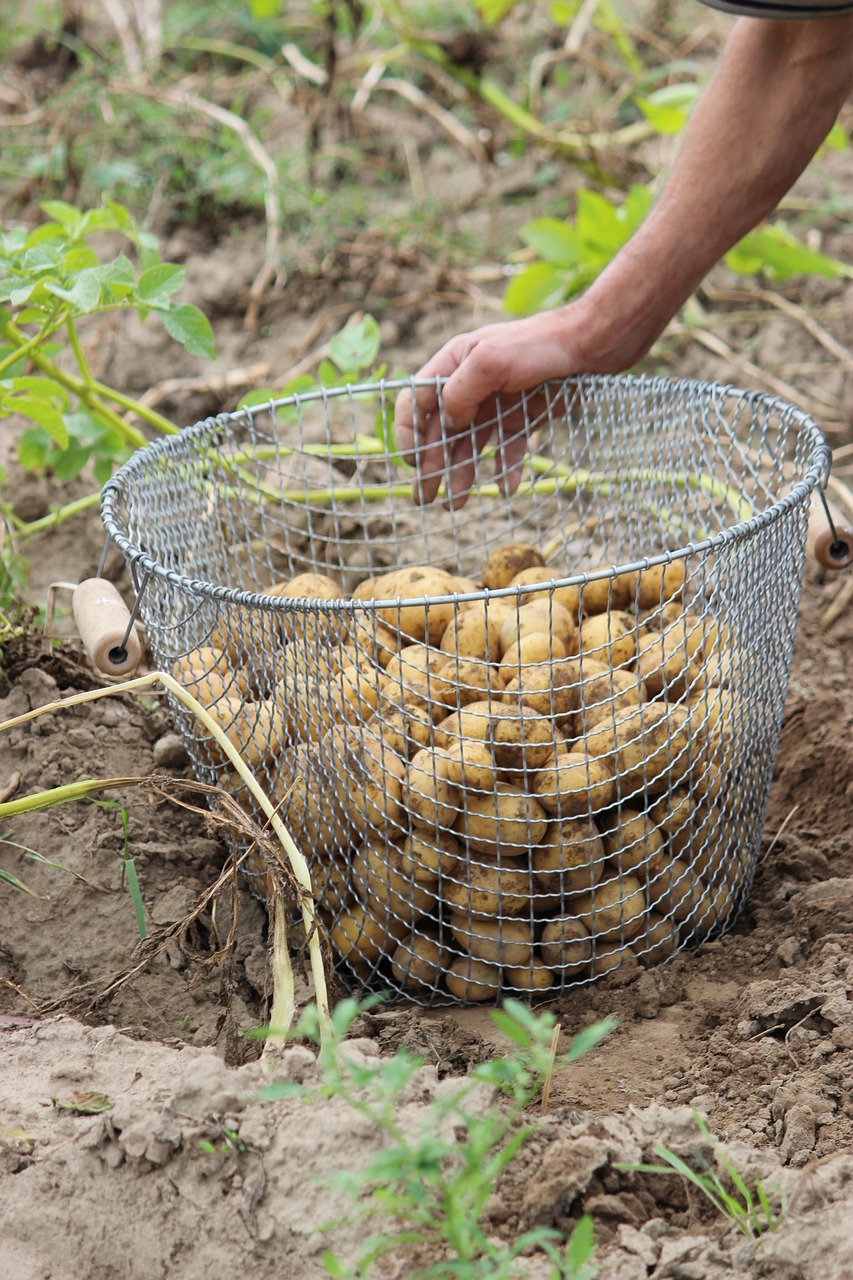
Homemade Dough for Fishing: A Step-by-Step Guide

12 min read
Homemade dough for fishing is a versatile and effective bait that can be used to catch a variety of species. It is easy to make and can be customized with different flavors and ingredients to attract different types of fish.
In this guide, we will provide step-by-step instructions for making homemade dough bait, as well as tips and tricks for using it effectively on the water. Whether you are a beginner or an experienced angler, learning how to make your own dough bait can be a fun and rewarding experience.
So, let’s get started!
What Is Homemade Dough for Fishing
Having considered the disadvantages and advantages of the test for fishing, let’s talk about the technology of its preparation. I’ll start with the fact that the dough can be different.
Raw Dough

” Raw ”, is mostly made with wheat flour and kneaded with water or other liquid. It, in fact, does not differ much in terms of cooking technology from the dough that the mother-in-law prepares to please her beloved son-in-law with dumplings.
Boiled Dough
“ Boiled ”, is the aforementioned “raw” fishing dough, from which balls have already been rolled up for putting on a hook and boiled in boiling water until cooked. The readiness of the “boiled” dough is determined by how the boiled balls begin to float. After cooking, such a nozzle has more “elastic” properties and is necessarily dipped in vegetable oil to prevent it from sticking together during storage.
Steamed Dough
” Steamed ” in a water bath or in a small amount of water. Such technology is justified when most of it is made up of those components that weakly release gluten (corn, pea flour, etc.) and for its isolation, it is necessary to steam the flour.
Ingredients and Equipment Needed for Homemade Dough For Fishing

List of Common Ingredients for Homemade Dough Bait
To make homemade dough bait, you will need a few basic ingredients and some basic kitchen equipment. Here is a list of what you will need:
- Flour: All-purpose flour is a common ingredient for homemade dough bait, but you can also use other types of flour such as whole wheat or cornmeal.
- Water: You will need a small amount of water to mix with the flour to create the dough.
- Baking powder: Baking powder helps to give the dough a more pliable and buoyant texture, making it easier to work with and more attractive to fish. Get Baking Powder on Amazon.
- Flavoring: You can add a variety of flavorings to your homemade dough bait to make it more attractive to fish. Some common options include garlic, cheese, and bacon.
Basic Kitchen Equipment Needed
To make homemade dough bait, you will need a few basic ingredients such as flour, water, baking powder, and flavoring, as well as some basic kitchen equipment like a mixing bowl, spoon or spatula, rolling pin, and stove or microwave to mix and cook the dough, which is easy to make and customize with different flavors and ingredients to attract different types of fish, and can be a fun and rewarding experience for both beginner and experienced anglers.
Here is a list of what you will need:
Mixing Bowl:
- A mixing bowl is essential for mixing the dough ingredients together. A large bowl will give you plenty of room to work and mix the ingredients thoroughly.
Spoon or Spatula:
- You will need a spoon or spatula to stir the dough ingredients together. A silicone spatula is a good choice because it is heat-resistant and won’t scratch your mixing bowl.
Rolling Pin:
- A rolling pin is useful for shaping the dough into balls or other shapes. If you don’t have a rolling pin, you can also use your hands to shape the dough.
Stove or Microwave:
- You will need a stove or microwave to cook the dough. If you are using a stove, you will also need a saucepan or frying pan to cook the dough in.
Fishing Homemade Dough Recipes

I will dwell in more detail on the technology for preparing all the mentioned varieties of dough and give some recipes for dough nozzles that I use myself and which have shown good results in fishing. I think this approach to presenting the essence of the topic will be the most understandable and useful.
Mixing the Dough Ingredients
To mix the dough ingredients, you will need a mixing bowl and a spoon or spatula.
Here’s what you need to do:
- Measure out 1 cup of flour and 1 teaspoon of baking powder and add them to the mixing bowl.
- Add 1/2 cup of water to the mixing bowl.
- Stir the ingredients together until a dough forms. If the dough is too dry, add a little more water. If it is too wet, add a little more flour.
- Once the dough comes together, turn it out onto a lightly floured surface and knead it for a few minutes until it becomes smooth and pliable.
Kneading and Shaping the Dough
Once you have mixed the dough ingredients together, it’s time to knead and shape the dough.
Here’s what you need to do:
- Turn the dough out onto a lightly floured surface.
- Knead the dough for a few minutes until it becomes smooth and pliable. This helps to develop the dough’s texture and make it easier to work with.
- Use a rolling pin or your hands to shape the dough into balls or other shapes. You can make the dough balls as small or large as you like, depending on the size of the fish you are targeting.
By kneading and shaping the dough, you will create a bait that is attractive and easy to use on the water. You can then cook the dough according to your desired technique and store it for later use.
Cooking the Dough
There are several ways to cook the dough, depending on your preference and the equipment you have available.
Here are a few options:
- Stovetop Cooking: To cook the dough on the stovetop, heat a saucepan or frying pan over medium heat. Add the dough balls to the pan and cook them until they are golden brown and cooked through, turning them occasionally to ensure even cooking.
- Microwave Cooking: To cook the dough in the microwave, place the dough balls on a microwave-safe plate and microwave them for a few minutes until they are cooked through.
Regardless of which cooking method you choose, be sure to let the cooked dough cool completely before storing it in an airtight container. You can store the dough in the refrigerator for up to a week, or in the freezer for longer periods of time.
Storing the Dough
Once the dough is cooked and cooled, it’s time to store it for later use.
- Place the cooked and cooled dough balls in an airtight container.
- Store the container in the refrigerator for up to a week, or in the freezer for longer periods of time.
- When you are ready to use the dough, remove it from the refrigerator or freezer and allow it to come to room temperature before using it.
By storing the dough in an airtight container, you can keep it fresh.
Variations and Flavorings
One of the great things about homemade dough bait is that it is easy to customize with different flavors and ingredients to make it more attractive to fish.
Ideas for Adding Flavor to Your Homemade Dough Bait

Here are a few more ideas for adding flavor to your homemade dough bait:
Cornmeal:
- Cornmeal is a common ingredient in dough bait and can add a crunchy texture and a subtle corn flavor.
Sesame Seeds:
- Sesame seeds are a tasty and nutritious addition to dough bait and can add a nutty, earthy flavor.
Honey:
- Honey is a sweetener that can add a subtle sweetness to dough bait and make it more attractive to fish.
Soy Sauce:
- Soy sauce is a salty, savory ingredient that can add a rich, umami flavor to dough bait.
Curry Powder:
- Curry powder is a blend of spices that can add a warm, aromatic flavor to dough bait.
Canned Tuna or Salmon:
- Canned tuna or salmon can be mixed into the dough to give it a savory, protein-rich flavor that is attractive to fish.
Tips for Experimenting with Different Ingredients and Flavors

Experimenting with different ingredients and flavors is a great way to find out what works best for you and the fish you are targeting. Here are a few tips for experimenting with your dough bait:
- Start simple if you are new to making homemade dough bait, start with a basic recipe and add a few simple ingredients to give it some flavor. This will give you a good foundation to build upon as you experiment with more complex flavors.
- Keep track of your experiments, as you experiment with different ingredients and flavors, make a record of what you tried and how it worked. This will help you keep track of what works and what doesn’t, and allow you to make adjustments as needed.
- Don’t be afraid to try new ingredients and flavors, even if they seem unusual or unconventional. You never know what might work until you try it, and you might discover some new favorites in the process.
- Be mindful of your equipment some ingredients, like garlic or cheese, which can be tough on your equipment and may require more frequent cleaning or maintenance. Keep this in mind as you experiment with different flavors and be prepared to clean your equipment as needed.
Homemade Dough for Carp
Let’s start with the simplest - a summer bait for carp.
- We take wheat flour and knead it in water with a small amount of syrup from raspberry or strawberry jam. It is important that this is jam, not jam, and that it contains syrup, which will color the nozzle in a pinkish-red color and give the appropriate aroma and taste.
- The dough is thoroughly kneaded to a tight state so that unnecessary moisture is removed, and a small rolled ball does not stick to the hands, it molds well, and when thrown on a hard surface it bounces like a rubber ball.
Homemade Dough for Bream
An excellent bait for catching bream, and at the same time easy to prepare, will be flour mixed with water with the addition of ground cinnamon, salt, and sugar for taste.
It is clear that you can create all kinds of flavors by adding ground ginger, vanilla, dried and chopped dill, crushed cake, instant coffee, cocoa, honey, condensed milk, garlic juice squeezed through a spadefoot, and boiled crushed potatoes to the dough for fishing.
Boiled Dough - A Classic for Any Fish
A classic example of a “boiled” dough would be a wheat flour dough recipe with milk and honey.
- We knead wheat (rye) flour in milk and add raw egg yolk and honey.
- The proportions are 1 cup (200 grams) of flour, 1 egg, and 0.5 tbsp. spoons of honey.
- After kneading the dough, roll the balls of the desired size and scald them in boiling water. The resulting balls (yellow due to the presence of egg yolk in the composition) with the smell of honey, and grease a little with sunflower oil.
Examples of “Steamed” Homemade Dough Recipe

Universal Recipe for the Steamed Dough
- Pea flour is mixed with the oatmeal ground in a coffee grinder in a ratio of 1 to 2.
- Salt and sugar are added.
- An equal volume of water is taken and brought to a boil.
- The prepared mixture is poured into boiling water and steamed over low heat, while steaming occurs with constant stirring to prevent burning. This steaming usually takes about 5-7 minutes until all the water has evaporated.
- Then the container with the steamed mixture is closed with a lid, wrapped in a towel, and left to “sweat” for 10-15 minutes. During this time, the mixture (the consistency will be slightly watery) cools to a temperature that allows it to be kneaded by hand.
- We give the necessary elasticity to the dough by kneading and adding the required amount of semolina or wheat flour to it. The amount of the last additions is determined by the consistency of the dough.
Tips and Tricks for Using Homemade Dough Bait
Homemade dough bait is a versatile and effective bait that can be used to catch a variety of species. Here are a few tips and tricks for using your homemade dough bait on the water.
How to Use Dough Bait Effectively
It’s important to select the right size and shape of your dough balls based on the size of the fish you are targeting and the conditions you are fishing in. You can also present the bait effectively using methods like slowly drifting, casting, and retrieving, or fishing it under a bobber.
To keep your dough bait fresh and attractive to fish, store it in an airtight container in the refrigerator or freezer and let it come to room temperature before using it. Don’t be afraid to experiment with different flavors and ingredients to create a dough bait that is tailored to your preferences and the tastes of the fish you are targeting.
Techniques for Presenting Dough Bait to Fish
To present your dough bait effectively to fish, consider techniques like slowly drifting the bait, casting and retrieving it, or fishing it under a bobber. You can also try different retrieves and retrieve speeds to see what works best for the fish you are targeting.
Remember to take into account variables like water depth, current, and cover, as these, can all influence how you present your dough bait.
Conclusion
In conclusion, making and using homemade dough bait is a fun and effective way to catch a variety of species.
Whether you are fishing from a boat or from the shore, homemade dough bait is a versatile and effective option that can help you land more fish.
Don’t be afraid to experiment with different flavors and ingredients to find out what works best for you, and be sure to store your dough bait in an airtight container to keep it fresh and ready to use on the water. With a little practice and patience, you can master the art of homemade dough bait and have even more success on the water.


